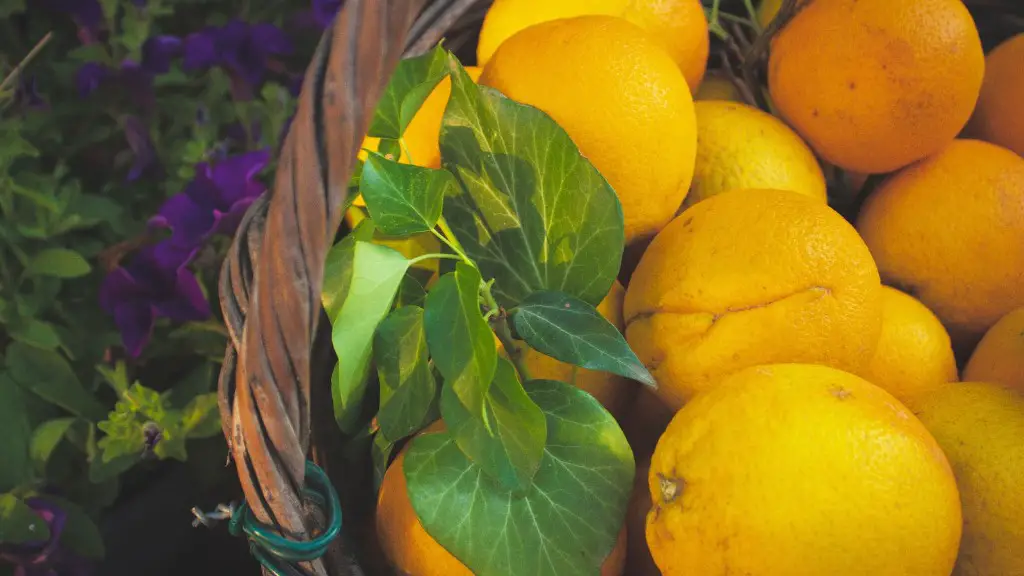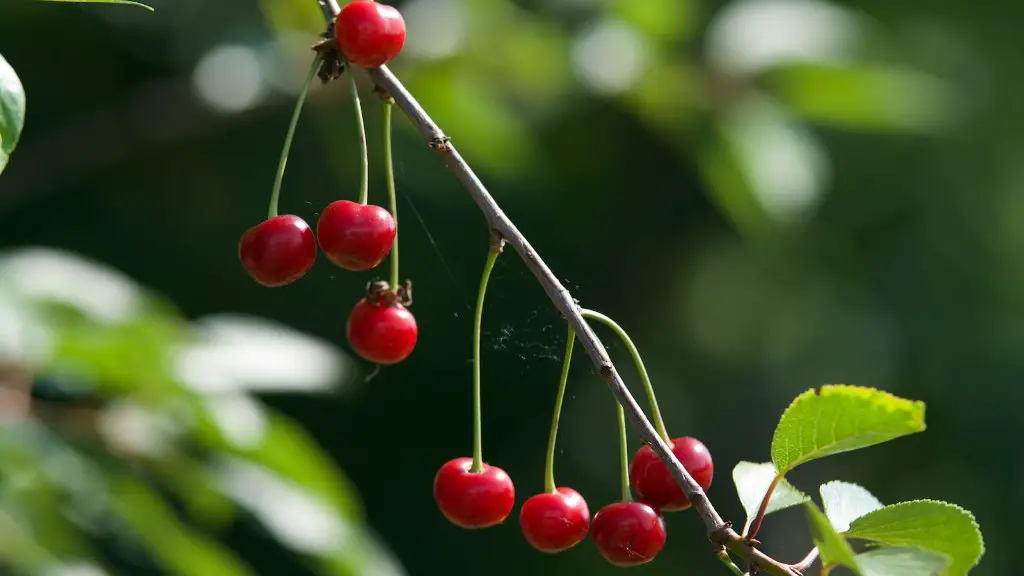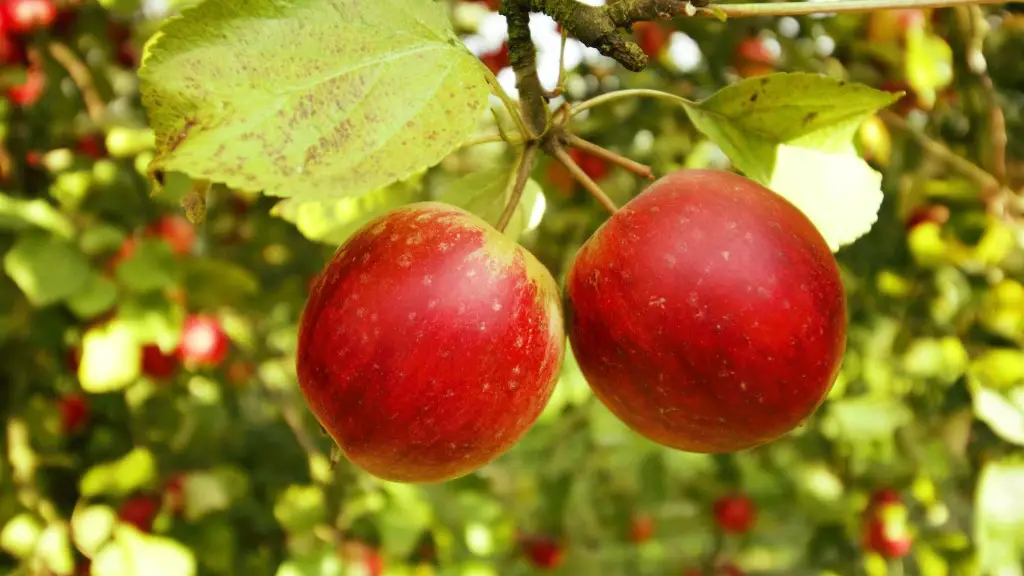Repotting a Meyer lemon tree is an important part of its upkeep. Depending on the age and size of the tree, it should be repotted every 1-2 years. When repotting, it is important to use a large container and well-draining potting soil, as a root-bound tree can cause serious damage and injuries to the tree. Here are a few things to consider when repotting a Meyer lemon tree, to ensure its health and longevity.
The first and most important step when repotting a Meyer lemon tree is to select a suitable pot size. The pot should be large enough to comfortably hold the entire root system, allowing the tree room to grow and thrive without becoming root bound. Additionally, for Meyer lemon trees, it’s important to select a pot with adequate drainage, as a lack of adequate drainage can cause root rot.
Next, when repotting a Meyer lemon tree, it is important to use a premium quality potting soil with the proper pH balance and nutrients. This will ensure the tree has access to the necessary materials to grow and thrive. Additionally, when transferring the tree from the old pot to the new one, it is important to loosen the soil and carefully remove the existing root ball. This will allow for adequate room for continued growth and will reduce the chance of the tree becoming root-bound again.
Lastly, it is important to water the tree and its new soil upon completion of the repotting process. Meyer lemon trees do not like to sit in soil that is too wet or too dry, and should be watered a few times and allowed to drain properly before the tree is brought back outside. This will ensure the Meyer lemon tree is given the best chance to thrive.
When is the best time to repot a Meyer lemon tree?
The best time to repot a Meyer lemon tree is during early springtime, before the growing season begins. In early spring, the tree is dormant and still recovering from the winter months, giving it enough time to adjust and acclimate to its new soil. Additionally, the cooler temperatures during this time help to keep the root system moist, reducing the chance for transplant shock.
Repotting in early spring also ensures that the tree does not have too much time to establish itself in its new pot. It is important to keep the stationary time to a minimum, as a transplanted tree is more susceptible to diseases, pests, and other environmental factors.
Lastly, it is important to remember that no matter what time a tree is repotted, it is important to monitor the tree’s health and condition. It is also essential to make sure the soil remains moist and has adequate nutrients that are essential for healthy growth.
How often should I repot my Meyer lemon tree?
Repotting a Meyer lemon tree is an important part of its upkeep. Depending on the age and size of the tree, it should be repotted every 1-2 years. This ensures that the tree has sufficient space to grow and is not root bound. Repotting on a regular basis will make sure the tree has the necessary nutrients to stay healthy and has the best environment to thrive in.
In addition to repotting the tree on a regular basis, it is important to look out for any signs of stress or disease. If the tree has a sparse canopy, yellowed leaves, or is root bound, it is important to repot it as soon as possible. Not addressing any of these symptoms can lead to a weakened tree and can make it more vulnerable to pest and disease outbreaks.
When repotting a Meyer lemon tree, it is important to inspect the root ball before transferring it to the new pot. This is important for two reasons. First, it allows the gardener to inspect the roots for signs of disease. Secondly, it allows for the removal of any dead or diseased roots that could cause damage to the remaining root system.
Lastly, in order to ensure proper drainage and allow for abundant growth, it is important to select pots that are specifically designed for lemon trees. This includes pots with large drainage holes, as well as those with a bigger opening and deeper soil. By selecting a pot specifically designed for lemon trees, it will provide the tree with a long-lasting, safe place to grow.
What potting soil should I use to repot a Meyer lemon tree?
When repotting a Meyer lemon tree, it is important to use a potting soil with the proper pH balance and adequate nutrients. This will provide the tree with the essential materials needed to stay healthy and thrive. A premium quality potting soil is essential, as it will provide the right balance of water, oxygen and Drainage for a Meyer lemon tree.
The type of potting soil used for a Meyer lemon tree should also have an adequate drainage system, as too much water can cause root rot and kill the tree. To ensure proper drainage, it is important to choose a potting soil with the right ingredients, such as humus, perlite, or vermiculite. Additionally, adding a layer of gravel at the bottom of the pot can help improve drainage and create a more suitable environment for the tree.
When repotting a Meyer lemon tree, it is also important to select a potting mix that is specifically designed for citrus trees. This means a mix that is designed to hold onto moisture and nutrients, while also providing good drainage. Lastly, it is important to use a potting mix that is lightly fertilized, as too much fertilizer can cause root burn or damage to the tree.
What to consider when transferring the Meyer lemon tree to a new pot?
When transferring a Meyer lemon tree to a new pot, there are a few things to consider to ensure the tree’s health and longevity. First, it is important to select a pot that is large enough to comfortably hold the tree’s entire root system. This will ensure the tree has adequate space to grow and will reduce the chance of the tree becoming root-bound again.
Secondly, when transferring the tree from the old pot to the new one, it is important to loosen the soil and carefully remove the existing root ball. This will ensure no roots are damaged during the transfer, and it will make it easier for the new potting soil to get settled around the root ball.
In addition, it is important to use a good premium quality potting soil when transferring the tree, as this will provide the tree with essential nutrients and drainage. It is also important to water the root ball upon completion of the transfer process, as this will give the tree the water it needs to settle in to its new pot.
Lastly, it is important to remember that when transferring the tree to a new pot, it is important to monitor the tree’s health and condition. This will help the tree to acclimate to its new home and will help to reduce any chances of transplant shock.
What is the best way to water a Meyer lemon tree?
It is important to properly water a Meyer lemon tree to ensure its health. The best way to water a Meyer lemon tree is to water it slowly and deeply with a container or hose, allowing the water to seep deeply into the root system. It is important to avoid over-watering, as this can lead to root rot and negatively impact the tree’s health.
When watering a Meyer lemon tree, it is also important to avoid splashing the leaves, as this can cause leaf burn. Additionally, it is important to avoid watering the tree too frequently, as this can cause the tree to become root-bound. It is generally recommended to water a Meyer lemon tree every 7-10 days, depending on the temperature and humidity of the environment.
In addition, it is important to avoid getting the leaves wet when watering a Meyer lemon tree. As Meyer lemon trees are prone to fungal diseases, it is important to keep the leaves dry whenever possible. The best way to do this is to water at the base of the tree, avoiding water splashing onto the leaves. Lastly, it is important to periodically check the soil’s moisture levels to make sure the tree is receiving enough water.




